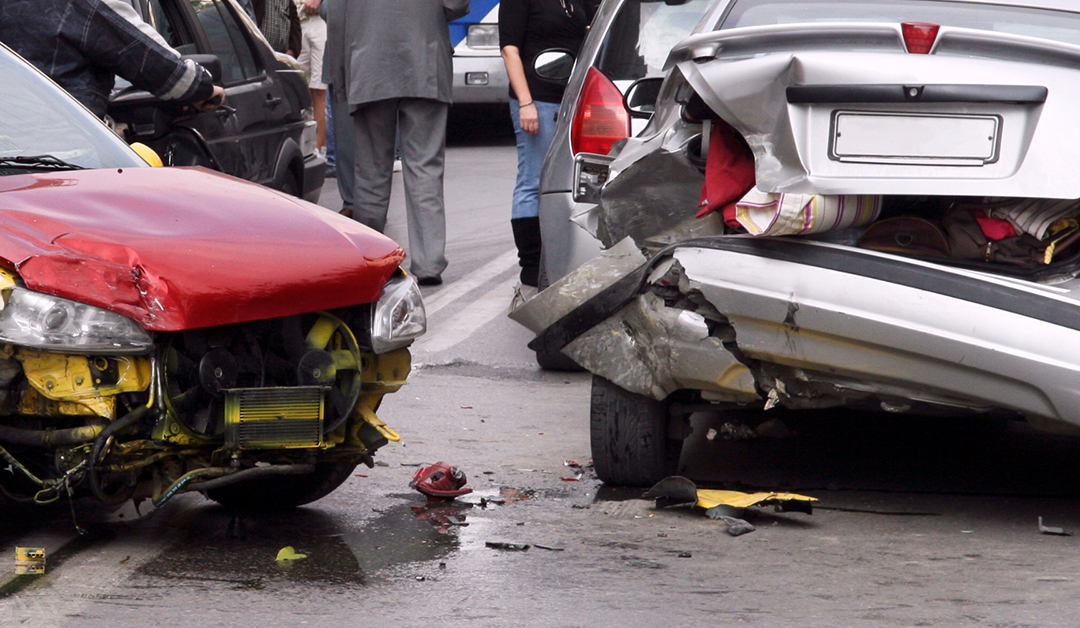How to land fair compensation and protect your rights when various factors are to blame
Longtime Georgia residents may remember the headline-making March 2022 pileup on Interstate 75 in Catoosa County that involved 125-vehicles, killed four people and injured upward of 40. Witnesses said the chain-reaction crash began when a tractor-trailer heading north toward Chattanooga drove into a wall of fog and slammed into the back of another tractor-trailer. One of those trucks crossed the median into the southbound lanes, spreading the wreckage across all lanes of the main connection between Chattanooga and Atlanta and shutting down a sizeable portion of the interstate for the day.
Thankfully, Georgia hasn’t seen an incident of that magnitude since. But multi-vehicle accidents do happen every day and more often than not involve the same contributing factors. While investigators pointed to the sudden dense fog and resulting near-zero visibility as the primary cause of the history-making pileup, they also say speed, failure to correctly use lights and the sheer amount of traffic on the highway that morning all played a role and exacerbated the severity of the accident.
One key factor was the speed at which drivers were traveling when they encountered the fog. Many motorists were traveling at high speeds, unaware of the deteriorating visibility ahead. This led to reduced reaction times and made it difficult for drivers to avoid collisions once they entered the foggy conditions.
Additionally, investigators noted that some drivers failed to use their headlights or fog lights in accordance with road safety guidelines, further compromising visibility for themselves and other drivers on the road. This lack of proper lighting increased the likelihood of collisions and made it challenging for drivers to anticipate hazards ahead.
Then, there was the timing. A Georgia Highway Patrol spokeswoman said visibility in the area was 10 to 15 feet at the time of the accident, which happened between 7:30 a.m. and 7:45 a.m., and that the fog lifted about an hour later, giving emergency crews their first look at the extent of the damage. That 7-o’clock hour is among the busiest windows of time for traffic as thousands of drivers make their way to work. The combination of high speeds, poor visibility and dense traffic created a perfect storm for disaster.
Understanding Multi-Vehicle Accidents
Multi-vehicle accidents are among the most chaotic and devastating events on the road, often involving severe or fatal injuries and extensive property damage. In the aftermath, the central question on the minds of everyone affected is: “Who is at fault?” Almost invariably, there is no one person or factor that carries 100% of the blame. Comparative liability, also known as comparative negligence, is a theory some states, including Georgia, use to split up the blame. Georgia follows a modified comparative fault system, meaning that each party’s degree of fault determines their eligibility for compensation. If a driver is found to be 50 percent or more at fault for the accident, they may not recover damages from other parties involved.
Legal Considerations in Multi-Vehicle Accidents
When dealing with multi-vehicle accidents in Georgia, several legal considerations come into play:
- Establishing Liability: Proving liability in multi-vehicle accidents requires a thorough investigation to determine the sequence of events and each driver’s actions leading up to the crash. Eyewitness testimonies, police reports and accident reconstruction experts play crucial roles in establishing liability.
- Comparative Negligence: Georgia’s comparative negligence laws mean that multiple parties may share fault for the accident. Assigning percentages of fault to each party can be contentious, and insurance companies often attempt to minimize their liability by shifting blame onto other drivers.
- Insurance Coverage: Multi-vehicle accidents can quickly exhaust the insurance coverage of individual drivers. In Georgia, all motorists are required to carry minimum liability insurance, but these limits may be insufficient to cover the damages in a multi-vehicle accident. Victims may need to explore other avenues for compensation, such as uninsured/underinsured motorist coverage or pursuing a personal injury lawsuit.
- Statute of Limitations: In Georgia, there is a limited window of time in which victims can file a personal injury claim after a multi-vehicle accident. The statute of limitations for personal injury lawsuits is typically two years from the date of the accident. Failing to file within this timeframe can result in the forfeiture of the right to seek compensation.
Navigating the Legal Process:
For individuals involved in multi-vehicle accidents in Georgia, navigating the legal process can be daunting. Seeking the assistance of an experienced personal injury attorney is essential for protecting one’s rights and maximizing the chances of a successful outcome. An attorney can:
- Conduct a thorough investigation into the accident
- Gather evidence to support the claim
- Negotiate with insurance companies on behalf of the victim
- Advocate for fair compensation through settlement negotiations or trial litigation
Additionally, consulting with a legal professional can help victims understand their rights and options for pursuing compensation, including medical expenses, lost wages, property damage and pain and suffering. Multi-vehicle accidents pose unique challenges for victims seeking compensation and justice in Georgia. From establishing liability to navigating comparative negligence laws, the legal complexities surrounding these accidents require skilled legal representation. By understanding the intricacies of multi-vehicle accidents and enlisting the support of experienced attorneys, victims can protect their rights and pursue fair compensation for their injuries and losses. If you or a loved one has been involved in a multi-vehicle accident in Georgia, call Farrar, Hennesy & Tanner at 912-384-2287 or request a free case review online.

